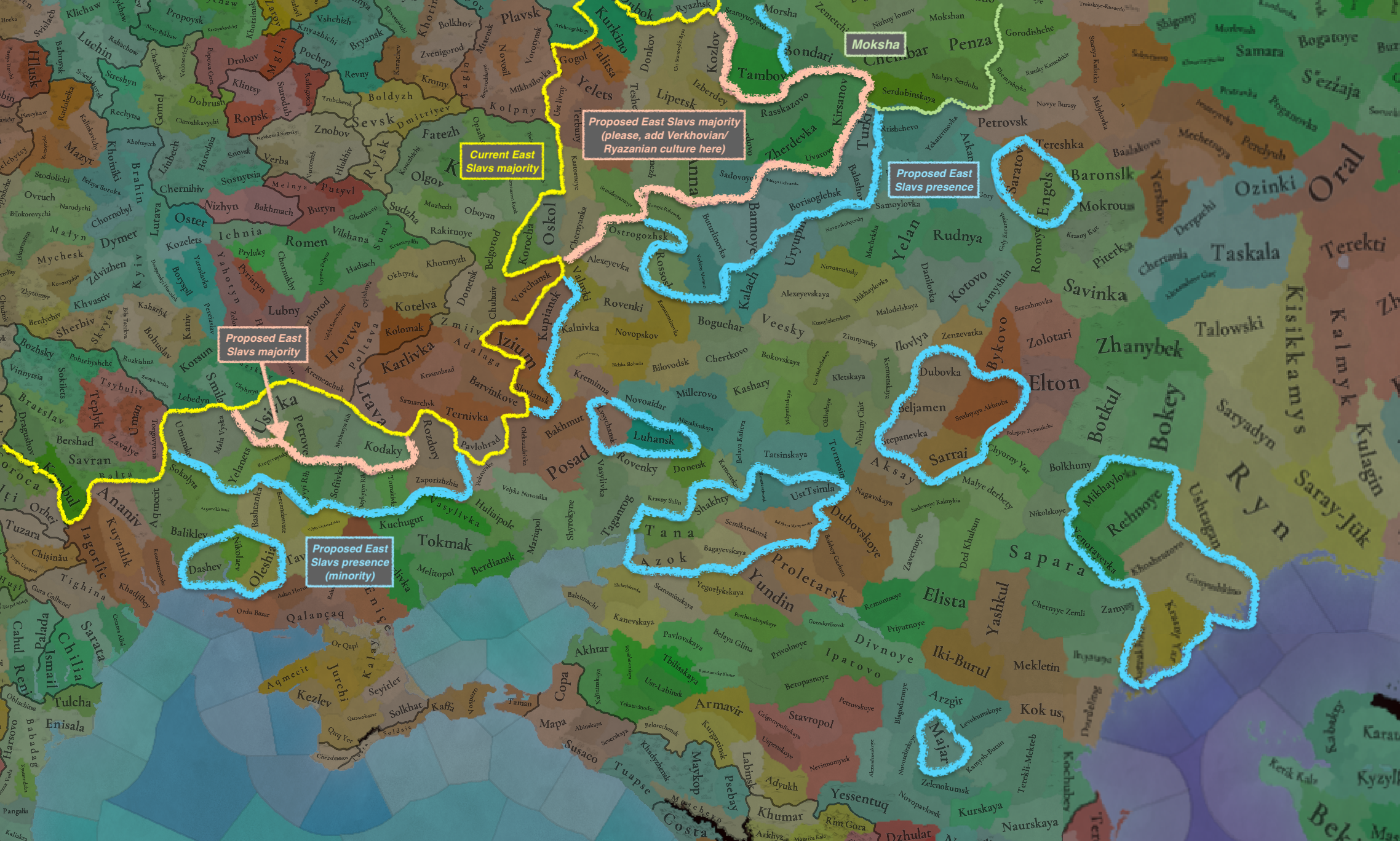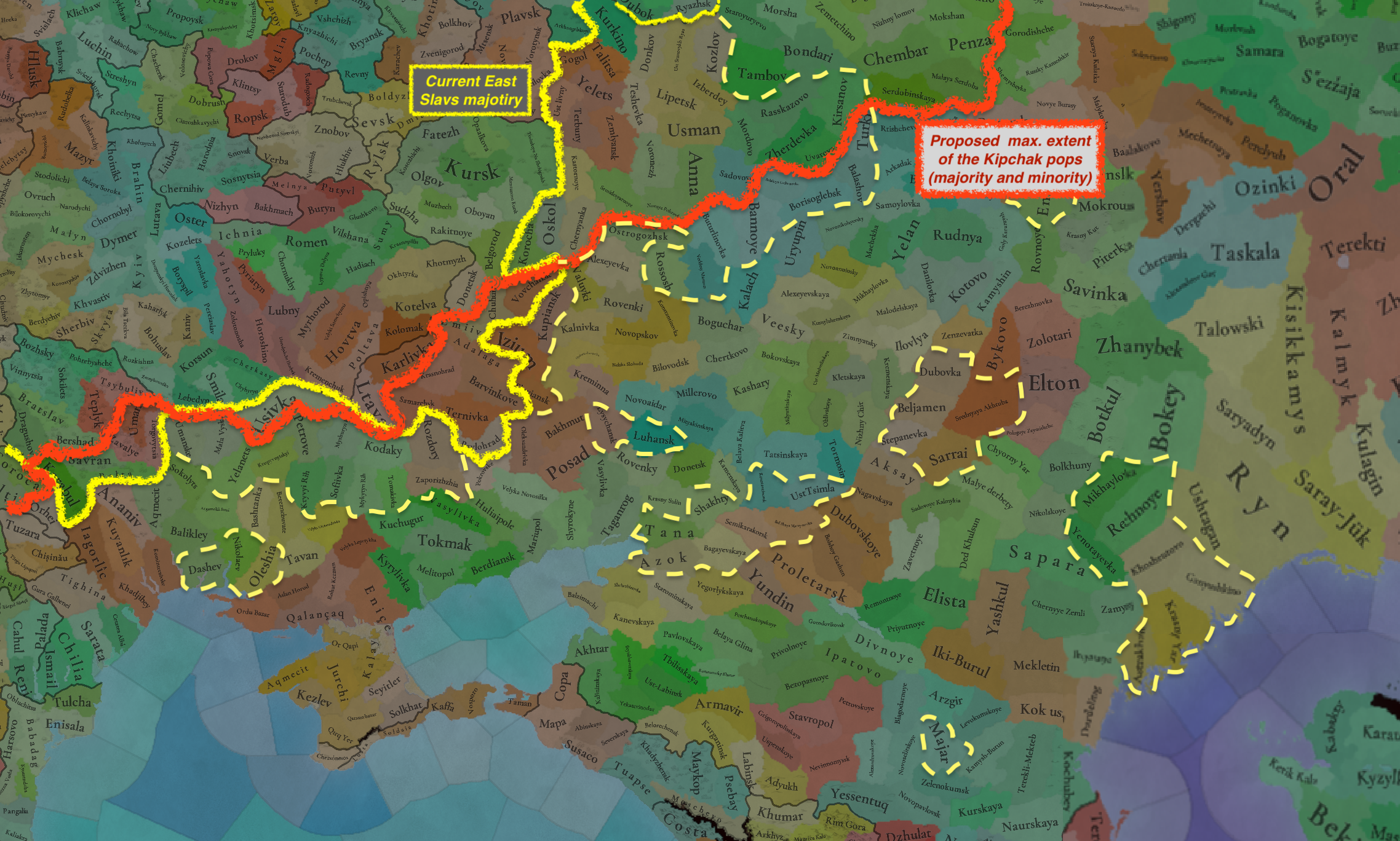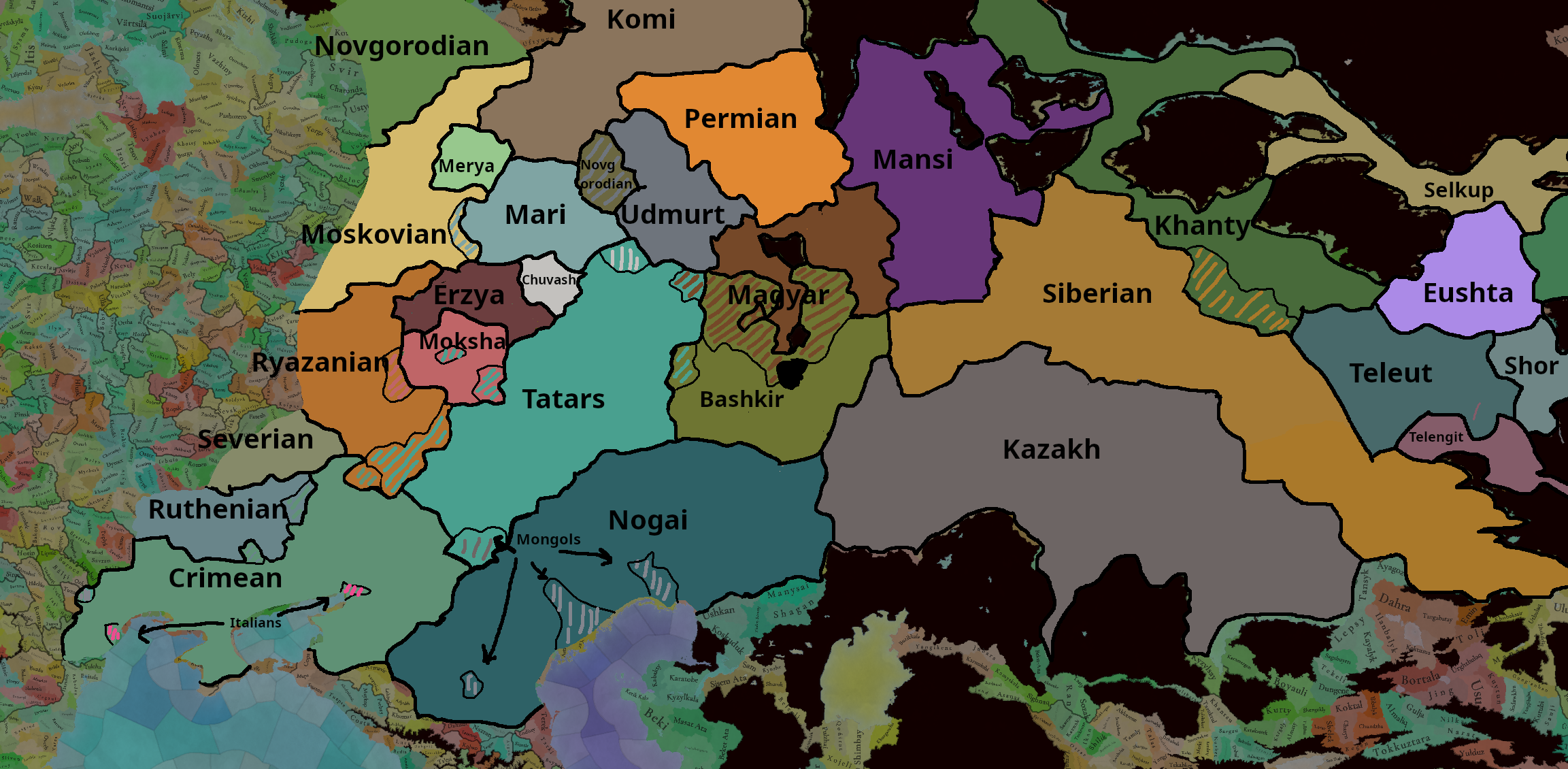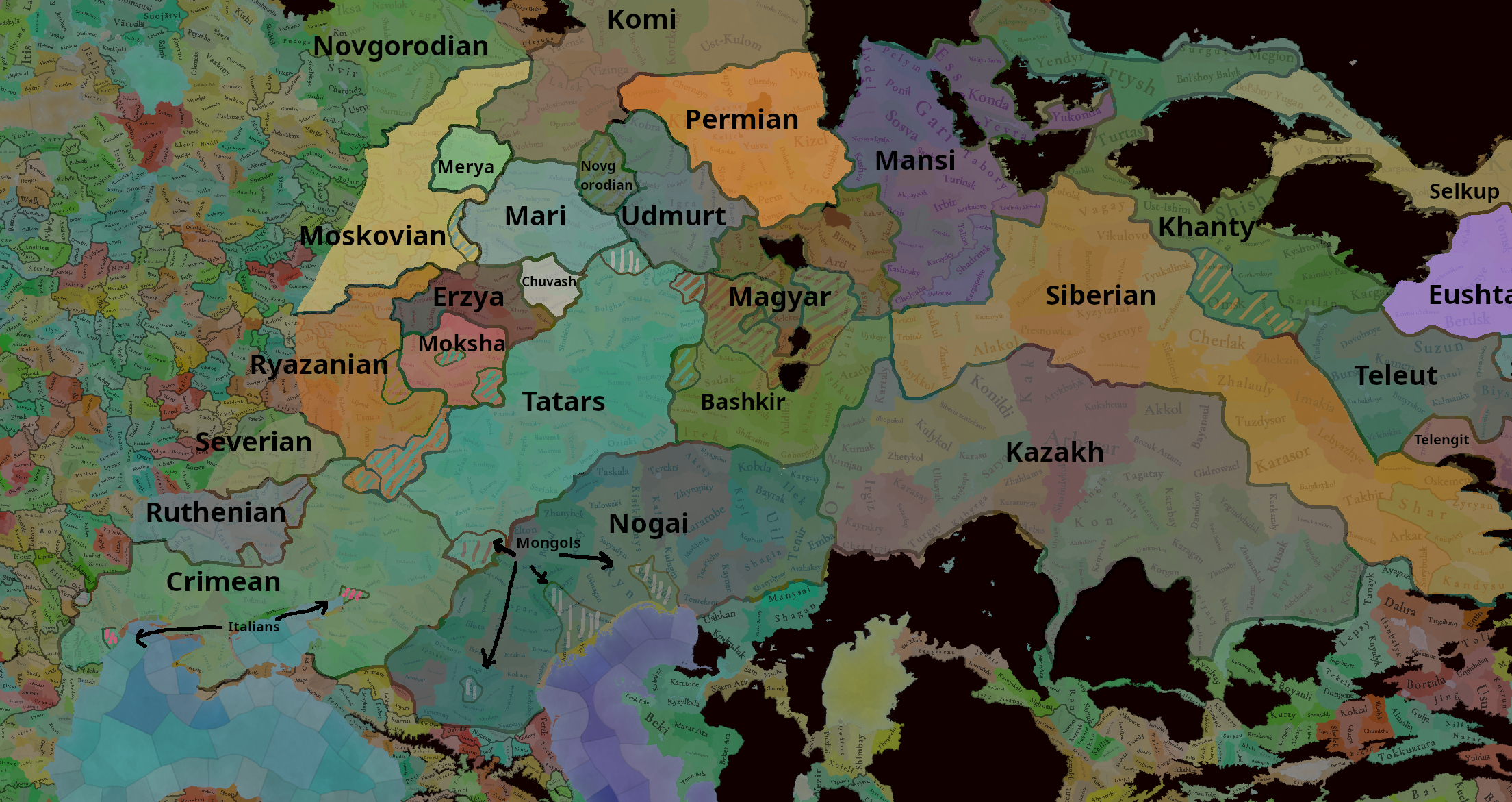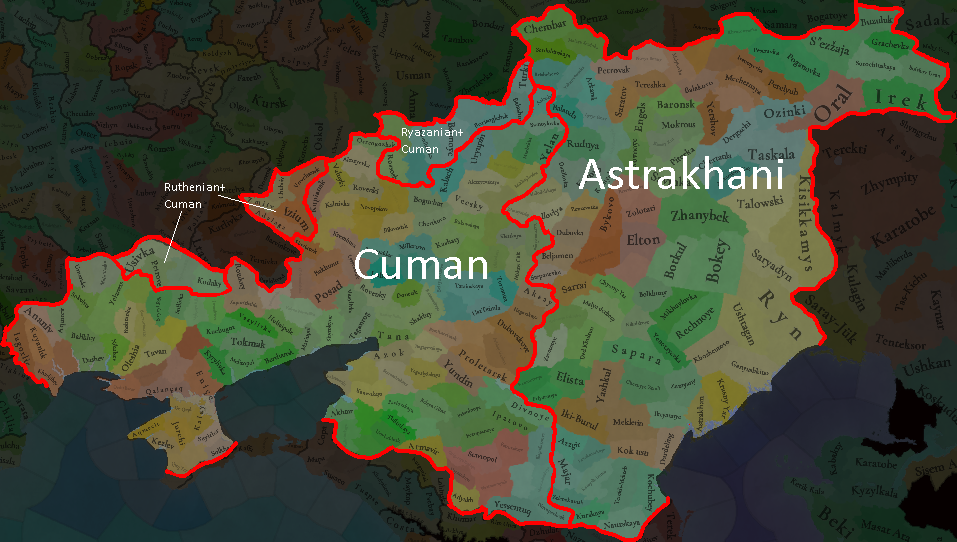So, we saw a lot of proposals for different clans of the Turkic people in steppe. I propose a different view, which is more inclined with what we currently have
View attachment 1337358
View attachment 1337359
I do not state it is based on history in any way... I only tried to follow the most common descriptions of who were where
Nogai formed between Yaik(Ural) and Caspian lowlands
Tatars absorbed Mishary as even now there is no significant difference. And Mishary will form from Tatars
All Turkic people near Kazakstan bekame Kazakh and Siberian represents Siberian tatars + Kerait people
I think the difficulty with views like this is that most of these cultural groups form long
after the game start. For example, you have a large culture there called the Nogai. The Nogai are named after Nogai Khan, and the reason for that is that the Nogai Horde was formed by Edigu, who was not of patrilineal Borjigin descent but claimed descent on the maternal line from Nogai. The difficulty is it that Edigu doesn't attain relevance until... the 1380s, a good 50 years after the start date. There is no Nogai culture in 1337. In fact, Nogai Khan himself only died in 1300. If Edigu never rises to power, there probably never is a Nogai Horde, and therefore no Nogai identity.
Realistically, in the 1300s, all of the key political players in the area see themselves as contesting for the throne of the Ulus of Jochi, or what the game calls the Golden Horde. They were not separating into culturally distinct entities. Arguably, this process did not happen until early 1500s, because it took two distinct historical steps. First, the Golden Horde had to be fully and completely collapsed and irrelevant as a cultural entity for reference, so that former participants no longer saw themselves as vying for a singular throne but as operating distinct and permanent divisions, and secondly the inhabitants of those divisions then needed time to identify with them (to say "I am Crimean", rather than "I am a member of the Golden Horde"). Even the first step is a good hundred years after the start date - the Crimean Khanate doesn't emerge until 1441.
I think the Paradox culture model has a big problem with the Steppes, which is that: political identity was very rapidly shifting in the context of nomadic pastoralist societies and new identities emerged, died, and were replaced all within the span of a few hundred years. It isn't well suited to a model where there's a set of cultures in 1337 which also describes the situation when the game ends. If there's any room for dynamic cultures in EU5, this would be one of the prime locations for it.
Alternatively, one step might be to just make the whole area "Kipchak", and have mechanics specific to nomadic pastoralist societies which help shatter them from time to time, distinct from the usual cultural mechanics of separatists and so on.
